 |  |  |
| Romanian Army in the Second World War · Forum Guidelines |
 Help Help
 Search Search
 Members Members
 Calendar Calendar
|
| Welcome Guest ( Log In | Register ) | Resend Validation Email |
| Pages: (105) « First ... 49 50 [51] 52 53 ... Last » ( Go to first unread post ) |    |
| alexkdl |
Posted: January 25, 2005 06:30 pm
|
|
General de corp de armata Group: Banned Posts: 1809 Member No.: 373 Joined: October 22, 2004 |
The Ordeal of Sad Sack II
================= The heroism of Sad Sack II's crew typified that of the more than 160 crews that bombed refineries at Ploesti in the low-level attack of Aug. 1, 1943. Most readers of AIR FORCE Magazine are familiar with the Aug. 1, 1943, low-level attack on refineries near Ploesti, Romania. A carefully prepared plan for simultaneous strikes on assigned targets by a force of almost 170 B-24s was disrupted en route by bad weather and navigation error. It was, nevertheless, a day of unsurpassed heroism. Leaders of the five B-24 groups saved a broken plan from disaster--but at a terrible cost. Nearly one-third of the B-24 force was lost in combat or forced by battle damage to land in neutral Turkey. Many stories and several books have been written about that mission, but less has been said about the heroism of individual crews. The story of Sad Sack II, a B-24 from the 66th Bomb Squadron, 44th Bomb Group, epitomizes the valor and self-sacrifice of so many on that mission. The 44th, an Eighth Air Force group, had been sent to North Africa to participate in the Ploesti mission. Col. Leon W. Johnson, commander of the 44th and later a four-star general, led 37 of his bombers on that mission. Unlike the two groups that preceded him, Colonel Johnson turned at the correct initial point and led 16 of his planes to their target--the Columbia Aquila refinery--while 21 of his bombers broke off to attack another target. The 16 descended to their bombing altitude of 250 feet. They could see that their target had already been hit by another group in the confusion of the disrupted plan, but Colonel Johnson, who would later be awarded the Medal of Honor, elected to continue his strike as planned. As the 16 B-24s approached their target, which was obscured by heavy black smoke, they came under concentrated small-arms and antiaircraft fire from all sides. Before "bombs away," Sad Sack II, piloted by 1st Lt. Henry Lasco, took many hits. Left waist gunner SSgt. Charles DeCrevel was shot through the thigh. Tail gunner Sgt. Thomas Wood was killed. The No. 2 engine was knocked out, and its propeller would not feather. It seemed to the crew impossible for any plane to survive a bomb run through the maelstrom of smoke, fire, and exploding delayed-action bombs that engulfed the target. This was it. At bombs away, navigator 2d Lt. Harry Stenborn's chest was torn open by an 88-mm shell. He managed to crawl along the bomb bay catwalk to the rear of the aircraft, where he collapsed and died. Top turret gunner TSgt. Leonard Raspotnik and radio operator SSgt. Joseph Spivey were hit. Neither survived. Lieutenant Lasco knew then that they could not make it back to North Africa. He decided to head for Turkey. By this time, Sad Sack II was at treetop level, vibrating badly, and barely able to remain airborne. Several Bf-109s attacked the critically damaged bomber. The wounded Sergeant DeCrevel continued to fire at the enemy fighters, downing one, while ammunition boxes exploded around him. He was wounded by more shell fragments. SSgt. Albert Shaffer, the right waist gunner, kept shooting at the fighters, though one of his legs had been almost severed by enemy fire. The bomber was down to about 50 feet with one wing low when a Bf-109, coming in level at 10 o'clock, shot the pilot through the face, stunning and temporarily blinding him. Copilot 2d Lt. Joseph Kill leveled the wings just before Sad Sack II bellied into a corn field. Bombardier 2d Lt. Dale Scriven was killed in the crash; both of Lieutenant Kill's legs were broken, and one of his ankles was dislocated. Lieutenant Lasco was pinned in his seat by a harness that would not release. He finally managed to free himself, remove the tangle of wires around Lieutenant Kill's legs, and drag him out of the burning wreckage through a hole in the fuselage. Still dazed, Lasco staggered off to look for help. While he was gone, Romanian peasants stole Lieutenant Kill's watch and ring, beat him, and left him for dead. Sergeant DeCrevel fought his way out of a plane he later described as "a pile of burning junk." Then he remembered that Sergeant Shaffer was still inside, immobilized with only one functioning leg. DeCrevel went back and dragged Shaffer out of the wreckage. After stripping off his own smoldering clothing, DeCrevel also went for help. Of Sad Sack II's nine crew members, all had been wounded and five killed. The four survivors--Lieutenants Lasco and Kill and Sergeants DeCrevel and Shaffer--became POWs in Romania until they were rescued by Fifteenth Air Force B-17s in late August 1944, after the Germans had retreated before advancing Soviet troops. Aug. 1, 1943, will always be special in USAF history. It was a day of supreme heroism on a unique scale, when hundreds of men laid their lives on the line--and many lost--to complete their mission. Thanks to Will Lundy, the 44th Bomb Group's historian, and to retired Col. William R. Cameron, who participated in the mission. Published December 1994. For presentation on this web site, some Valor articles have been amended for accuracy. -------------------------------------------------------------------------------- Copyright © Air Force Magazine |
| alexkdl |
Posted: January 25, 2005 06:37 pm
|
|
General de corp de armata Group: Banned Posts: 1809 Member No.: 373 Joined: October 22, 2004 |
Saga of `Utah Man'
============== After five decades, a 'Well done!' honor Last October 21, Walter Stewart BA'47 JD'49 stood at ramrod attention during a ceremony conducted especially for him in front of the University's Park Building. A senator, a general, and the president of the U spoke raptly and glowingly about the long-ago exploits that had finally brought Stewart across a stretch of time to this hour of honor. The Distinguished Service Cross, the nation's second highest decoration, was pinned on his chest. Fifty-two years had passed since fate placed Stewart, a gangly 25-year-old Army Air Corps pilot, at the controls of the lead plane, dubbed "Utah Man," in the famous low-level bombing raid on Romania's Ploesti oil refineries in World War II. (Continuum published a gripping account of the incident in the Summer 1993 issue.) After the American commander's aircraft was shot down, Stewart took the lead, piloting "Utah Man" into the face of the Germans' bristling defenses. "Utah Man" bored through the vicious antiaircraft fire and dropped the first bombs of the raid. Then Stewart nursed his four-engine B-24, bullet-riddled and perilously low on fuel, back across Yugoslavia and over the Mediterranean to its home base in Libya, landing safely after 1,200 miles and 14 hours in the air. The mission's cost had been high. There were 178 bombers carrying 1,700 airmen in the attack. Fifty-four planes were lost; 310 crewmen were killed and 185 were taken prisoner. The Ploesti raiders earned the most decorations in any single wartime assault. But the medal that was rightfully Stewart's after the heroic episode was mistakenly given to another pilot. Years later, the error was rectified in a simple but moving ceremony at the Utahn's alma mater. Stewart, now a 77-year-old farmer from Benjamin, Utah, was also honored at midfield in Rice Stadium prior to the Utah-Air Force game, when he was applauded by the crowd and given an appropriate salute: a low-level flyover by four Air Force jet fighters. The saga of "Utah Man," which began in August 1943 with a flight into hellfire, came to a close on a placid Saturday morning five decades later. "Mission accomplished, Lieutenant Stewart," said President Arthur Smith after reading the medal's citation, a profile in courage. "Well done!" -------------------------------------------------------------------------------- Attached Image 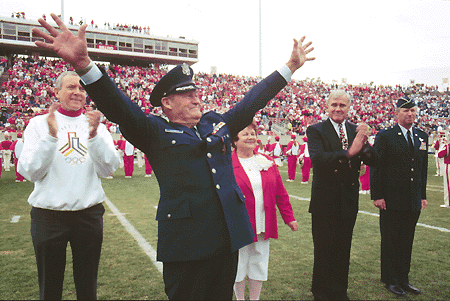 |
| alexkdl |
Posted: January 25, 2005 06:41 pm
|
|
General de corp de armata Group: Banned Posts: 1809 Member No.: 373 Joined: October 22, 2004 |
Aug. 1, 1943. I got us there and back again and all of us on #51 are all right.
================================================== They had their final briefing for the low-level raid on Ploesti, Romania, on Aug. 1, 1943. A successful strike on the oil fields there would be a significant blow against the German war machine. The B-24s, accustomed to the anonymity of 20,000 feet, would barrel in just 50 feet off the ground for a surprise attack. It was a volunteer mission. Before it was over, 54 of 177 planes would be shot down and more than 500 airmen killed, captured, or missing. The men were given maps, money and lists of phrases in several languages in case they had to put down in Europe. Fogel had his own survival gear: two pairs of socks and GI shoes laced up all the way; a couple of handkerchiefs, a pocket knife, his .45 sidearm, a hunting knife and string. "I don't know why the string, but I'm taking some," Fogel wrote. Fogel was assigned a familiar plane called "Let's Go!" hoping it wouldn't. When he hit the starter he thought, "I hope the son-of-a-bitch doesn't start." The engines grumbled alive. Fourteen planes flew out over the Sahara and then crossed the blue barrier over the Mediterranean Sea. Past the island of Corfu, a routine navigation point, the planes tightened formation and started falling from 14,000 to 6,000 feet, then to a mere 100 feet. Past the Blue Danube, they were three minutes from the initial point, where the planes would turn as one and begin the bomb run. But confusion because of two identical landmarks caused the group to turn too soon. Instead of flying toward Ploesti, they were headed toward Bucharest. A voice came over the radio. "This is General Ent. Drop your bombs on any military objective." All planes broke formation and "Let's Go!" turned back toward Ploesti and followed the railroad to a railroad roundhouse, dropping three bombs. The rest of the plane's bombs fell on a railroad bridge. Fogel turned and met another bomber group head on. Fogel dipped his plane below the already low-flying planes, skipped across the ground and then headed toward the mountains. It was a Sunday and as they passed back through the country, a few farmers waved at the bomber. The waist gunners saw girls skinny-dipping. After passing the mountain range, a B-24 got on Fogel's wing. By the time they reached Corfu, seven bombers had joined up. Fogel's plane taxied in. It hadn't been damaged. The bombers that reached Ploesti destroyed about half the refineries. Fogel would eventually receive the Distinguished Flying Cross for his flight. But just then, Fogel was too tired to care. He went to the flight surgeon's tent for a shot of booze. "That was about 14¤ hours from the time we left until the time we got back," Fogel said. He escaped the questions of a few war correspondents, went to his tent and stretched out on his cot. He slept for a long time, his shoes still on his feet. Courtesy : TW Pilot Ernest Vogel This post has been edited by alexkdl on January 25, 2005 06:45 pm Attached Image 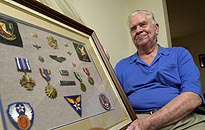 |
| alexkdl |
Posted: January 25, 2005 06:52 pm
|
|
General de corp de armata Group: Banned Posts: 1809 Member No.: 373 Joined: October 22, 2004 |
SAND WITCH GunnerTsgt Kaufman
========================= Kaufman's 13th mission was the low-level raid on the oil refineries at Ploesti, Romania, on Aug. 1, 1943, in which 53 Liberators were shot down. Kaufman's bomber, named "Sand-Witch," was set ablaze by ground fire and crashed. "Sergeant Kaufman ... rendered a magnificent performance of duty in the accomplishment of the mission," according to his citation. "Besides aiding in the defense of his plane from enemy pursuits, he raked the target effectively with machine-gun fire, even after his plane had been hit by anti-aircraft fire, and was evidently unable to continue in flight for long." Kaufman died three days later and is buried in Belgium. He was 22. He was awarded the Distinguished Service Cross and other medals. From : Indiana Gazette |
| alexkdl |
Posted: January 25, 2005 07:01 pm
|
|
General de corp de armata Group: Banned Posts: 1809 Member No.: 373 Joined: October 22, 2004 |
General Leon William Johnson of the Air Force, who won the Medal of Honor
for leading a daring low-level raid in the all-out air assault that throttled enemy fuel supplies from Romania's vast oil fields in 1943, died Nov. 10, 1997 at the Belvoir Woods health care center in Fairfax, Va. He was 93 and lived in McLean. The target of the engagement, one of the most momentous of World War II, was the refineries and a forest of oil rigs around Ploesti, center of the Romanian petroleum industry. Churchill called it "the taproot of German mechanized power." On Aug. 3, 1943, Colonel Johnson led the final bomber group that went in below 100 feet to deliver the death blow. Of the six planes in that formation, his was the only one to limp back to base in Libya, blackened and riddled with bullet holes. Ploesti was a logical target for the Allies, and its defenses had been bolstered accordingly. The raid was one of the costliest aerial encounters. On that day, some 50 Axis planes, mostly German fighters, were shot down, along with 20 B-24 Liberators from the 9th Air Force; more U.S. bombers ended up crashing or making emergency landings in enemy or neutral territory. At the time, Romania, under the dictator Ion Antonescu, was allied with Germany against the Soviet Union. There were 13 refineries around Ploesti, 35 miles north-northwest of Bucharest, including Europe's largest, the Romano complex formerly run by Standard Oil of New Jersey. The raids got under way in earnest in April of 1943. Johnson was on loan from the 8th Air Force in England to join the 2,000 men training in North Africa for the 2,400-mile round trip to Romania. They made their practice runs against a "ghost" Ploesti built in the Libyan desert. "It was more like an artist's conception of an air battle than anything I ever thought could be," Johnson said. His unit was among those that missed the target on the first run. Johnson became separated from the main force, temporarily lost over cloud-covered mountain tops. When he reached his particular target, a big refinery, parts of it were already ablaze. He headed his group into a mass of flames and explosions to drop bombs for the finish. Only he and his own crew survived. Johnson, who was born in Columbia, Mo., spent more than four decades in uniform. He graduated from the U.S. Military Academy and was commissioned a 2nd lieutenant in 1926. He later received a master's degree in meteorology from the California Institute of Technology. He transferred to the Army Air Corps after three years in the infantry and was among the first flying officers of the 8th Air Force and an assistant chief of staff for that command during its early days in Savannah, Ga. He went with the 8th to England in June 1942 and assumed command of its 44th Bomb Group the next year. His group was attached to the 9th Air Force in Africa specifically to assist in the assault on Ploesti. After returning to England, following the raid and receiving his medal, he was promoted to brigadier general and organized the 14th Combat Wing, heading it until V-E Day. Postwar assignments included Washington and Colorado Springs, where he served as commanding general of the 15th Air Force, a unit of the Strategic Air Command. Once more in Britain he organized the 3rd Air Force, which was a mainstay of the Berlin air lift. Later postings took him to the Continental Air Command, the Military Staff Committee of the United Nations, NATO and the Supreme Allied Command in Europe. He retired in 1961 but was recalled to active duty to direct a military evaluation panel of the National Security Council. He was promoted to four-star rank in August 1957. After leaving the service in 1965 Johnson worked as a consultant. A golfer and gardening enthusiast, he was a past president of the National Capitol Dahlia Society. His wife, Lucille Taylor Johnson, died in 1983 after 54 years of marriage. Survivors include two daughters, Sue Vandenberg of Tucson, Ariz., and Sarah Abbott of Pensacola., Fla Attached Image 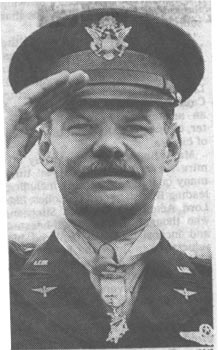 |
| Dénes |
Posted: January 25, 2005 08:40 pm
|
|
Admin Group: Admin Posts: 4368 Member No.: 4 Joined: June 17, 2003 |
Short video of the Ploesti Raid of Aug. 1, 1943 (4:30 min).
http://www.homeofheroes.com/video/index.html Gen. Dénes |
| alexkdl |
Posted: January 25, 2005 10:54 pm
|
|
General de corp de armata Group: Banned Posts: 1809 Member No.: 373 Joined: October 22, 2004 |
Hello Denes
Thanks for adding the video link......I added this feature on my very first post of this topic....the format of the video is a non compatible format for many PC's , thanks anyways Alex |
| alexkdl |
Posted: January 26, 2005 08:56 am
|
|
General de corp de armata Group: Banned Posts: 1809 Member No.: 373 Joined: October 22, 2004 |
Dan , C-2, CIP and all
Here's a message I got from the States about the MARGIE of Lt Gooden which crashed near Paitra South West of Slatina , is there any chance when you travel to Ploesti you will attempt locate the MARGIE crash location ? Hello Alex, I am a member of the group and have been looking for information on my uncle, Sgt. George H Kaylor. He was a gunner on 'Margie' (343rd, 98th) and was lost on the Tidal Wave mission. 'Margie' was piloted by Lt Gooden and was in the 'Kane' group. Of the 10 on board 8 were lost and 2 were captured after bailing out before crashing. My uncles remains were never identified and I have been trying to locate them for a long time. Three of the 8 that were lost were identified so I assume my uncles remains were recovered. Would appreciate any/all assistance you could share on recovery of remains and the crash site of 'Margie'. Thank You, George |
| Cantacuzino |
Posted: January 26, 2005 09:38 am
|
||
|
Host Group: Hosts Posts: 2328 Member No.: 144 Joined: November 17, 2003 |
Alex, interesting facts about Margie issue. Slatina it's not located near Ploesti ( 60 Km north Bucharest) but rather west of Bucharest probably aprox. 160-200Km.( I will check the map). For the moment in Romania are winter days ( start to snow) so difficult for a long trip to Slatina. We have to wait for weather change. The remains of the Margie crew were probably burried first in local cemetery near Slatina. Probably were transfered after the war in european cemetery. I will dig more for this issue . Dan. |
||
| alexkdl |
Posted: January 26, 2005 09:49 am
|
|
General de corp de armata Group: Banned Posts: 1809 Member No.: 373 Joined: October 22, 2004 |
Dan, sure take your time and start the expedition when it gets warmer,,,,,if you look at the chart Piatra Olt is South West of Slatina ...slatina may be some 70 miles south west aprox 200 degree from Pitesti and aprox 120 miles 220 degree from Ploesti or almost exactly 270 degree west of Bucuresti some 120 miles
Alex |
| alexkdl |
Posted: January 26, 2005 10:02 am
|
|
General de corp de armata Group: Banned Posts: 1809 Member No.: 373 Joined: October 22, 2004 |
PILOTS CRASH SITES AIRCRAFT NAMES
========================================= Lt Hughes and Lt Horton BANESTI OLE KICK KAPOO & SAND WITCH Lt O'Reilly NEDELEA CHATANOGA CHU CHU Lt Long and Lt Mehehan PLOESTIORI JERSEY BOUNCE/ LADY JANE/ BERTHA Lt Porter , Chitorani, Harms,PLOPU EUROCLYDON Lt Dore and Lt McGraw , BERCENI OLD BALDY & JERSEY JACKASS BASHF. Lt Palm and Capt Taylor TATARANI BREWERY WAGON & VULGAR VIRGIN Lt McGuire , BARCANESTI YEN TU Lt Helin , TESTIENI BOIL MAKER II Lt Gentry TURGUSORUL FORKY II Capt Houston, BRAZI SATANS HELLS CATS Lt Winger , POIENARI BURCHI WING DINGER Lt Lasco , BUTIMANU SAD SACK II Lt Scrivner , CIOCOC SCRAPPY II Lt Neef , BUTOIU THE BOOMERANG Lt Weaver , VISINA LIL'ABNER Lt Teltser OGREZENI PUDGY Lt Lt Rheinhart PIATRA GI GAL Within Ploesti municipal area are : Lt Col Baker HELLS WENCH ,Lt Stamplois JOSE CARIOCA ( women jail) , Lt Neely RAUNCHY Lt Hinch,Lt Murphy BOOTS,Lt Gooden ( MARGIE not at Piatra) Lt Hadcock DAMIFINO OR FOUR EYES , Lt Thommas AIRE LOBO , Lt Deeds 42-40991 , Lt Sulflow SEMPER FELIX Let me know if you need to know where each city is Alex This post has been edited by alexkdl on January 26, 2005 10:29 am |
| Cantacuzino |
Posted: January 26, 2005 10:03 am
|
||
|
Host Group: Hosts Posts: 2328 Member No.: 144 Joined: November 17, 2003 |
Regarding B-24 remains, Cip had a turbine wheel from Pudgy and I have a TW B-24 compass, and posible in Aviation Museum from Otopeni had B-24 front wheel. And probably many people in Ploesti could have something from B-24 in their house. From the book of Grigorescu it looks that parts( alluminium alloy) from Chatanooga Coo Choo were used to build forks for orphans admin. by Caradja Princess ( and evan a bathtube was build from a B-24 fuel tank for orphans). And many gipsies after the TW raid were selling combs made from B-24 aluminium alloy with a funny advertise " Pieptenul Liberator iti umple chelia cu par" wich can be translate " Liberator comb put back your hair ( for hairless people |
||
| Cantacuzino |
Posted: January 26, 2005 10:11 am
|
||
|
Host Group: Hosts Posts: 2328 Member No.: 144 Joined: November 17, 2003 |
Last time i missed to look. But i didn't missed the Columbia Aquila SW Ploesti ( today also Rompetrol company) picture courtesy Dan Melinte . Attached Image 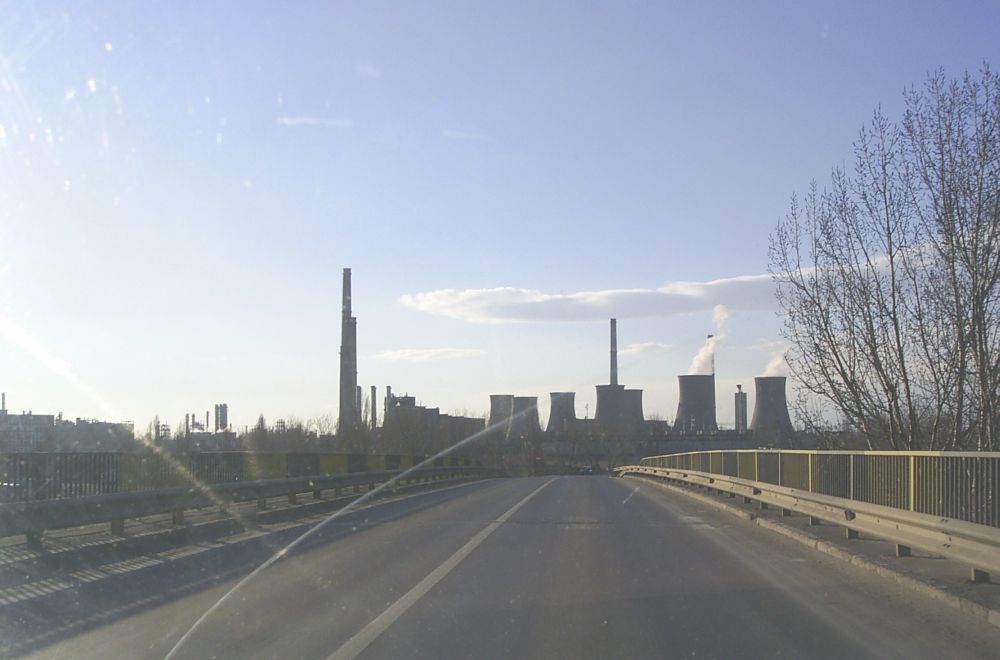 |
||
| alexkdl |
Posted: January 26, 2005 10:32 am
|
|
General de corp de armata Group: Banned Posts: 1809 Member No.: 373 Joined: October 22, 2004 |
Great Picture Dan ...no way to see the past
Alex |
| Cantacuzino |
Posted: January 26, 2005 10:43 am
|
||
|
Host Group: Hosts Posts: 2328 Member No.: 144 Joined: November 17, 2003 |
And below Berceni village were the 2 B-24 crashed nearby. Attached Image 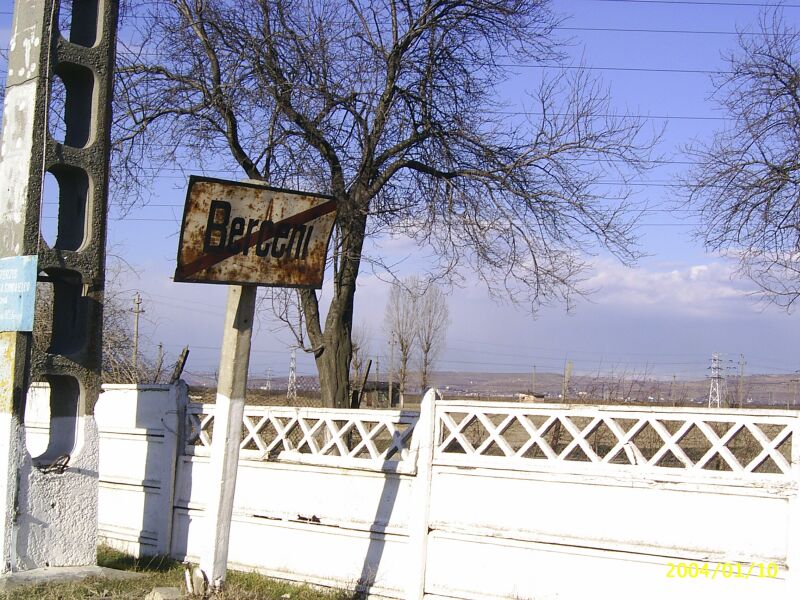 |
||
0 User(s) are reading this topic (0 Guests and 0 Anonymous Users)
0 Members:
 Pages: (105) « First ... 49 50 [51] 52 53 ... Last »
Pages: (105) « First ... 49 50 [51] 52 53 ... Last » |
   |
[ Script Execution time: 0.0259 ] [ 14 queries used ] [ GZIP Enabled ]
Powered by Invision Power Board(U) v1.3.1 Final © 2003 IPS, Inc.





